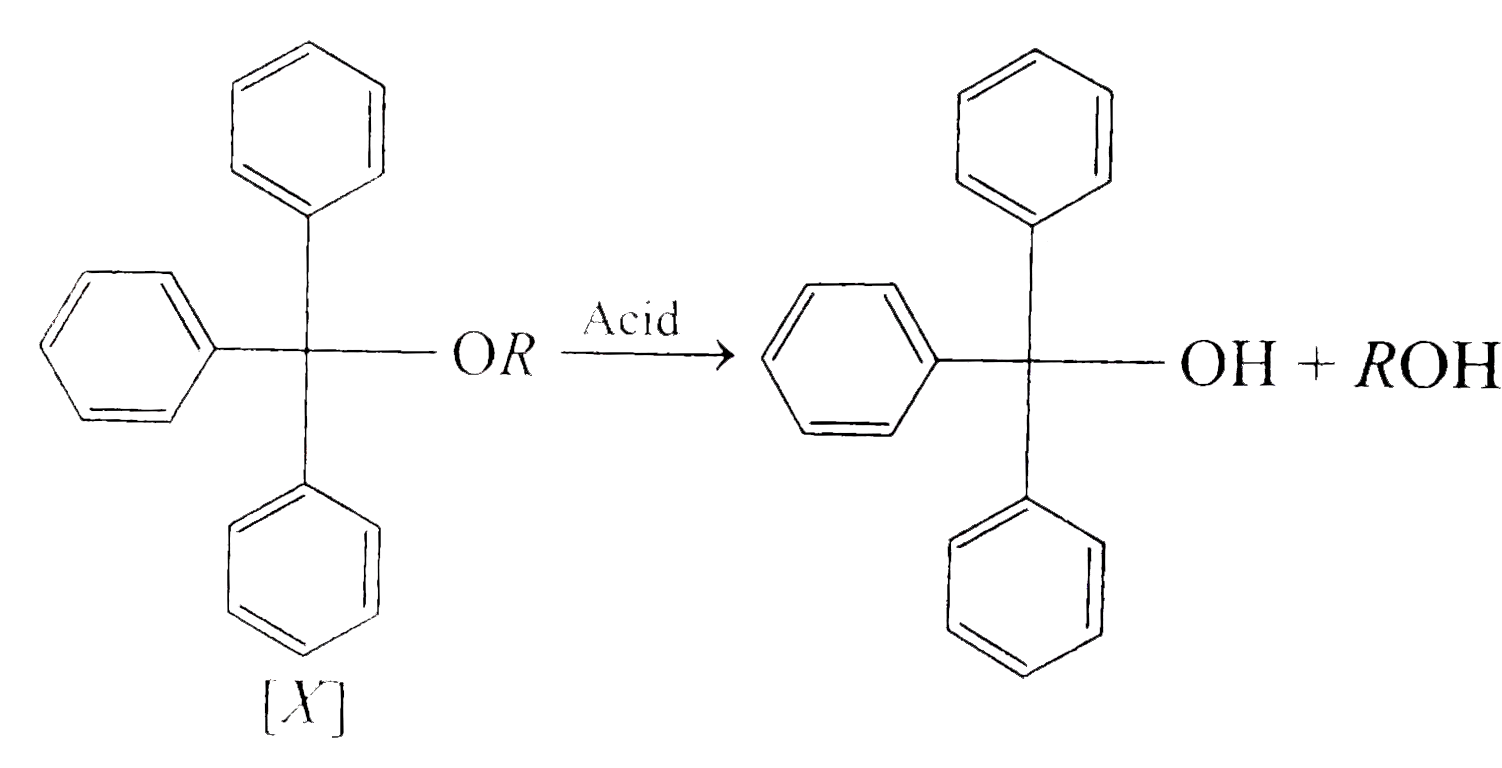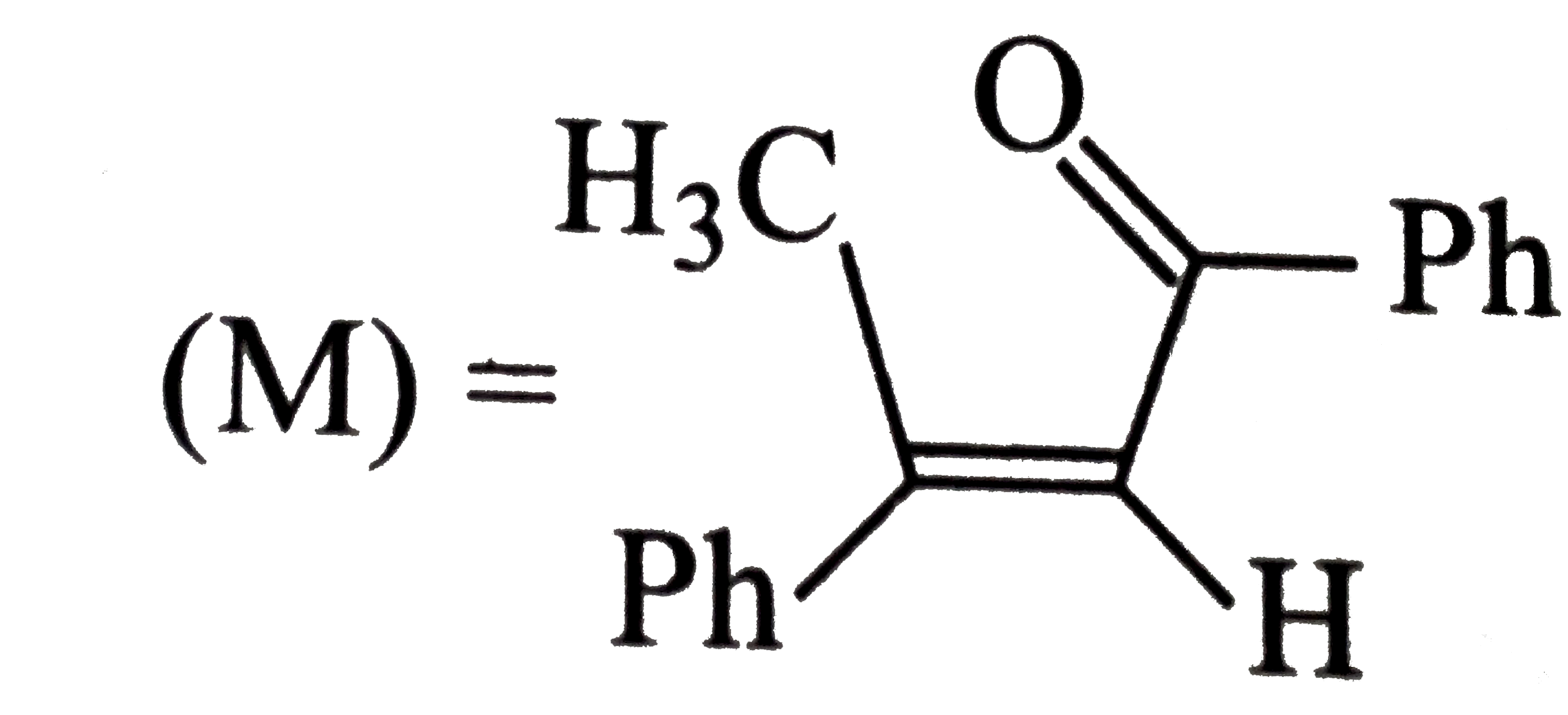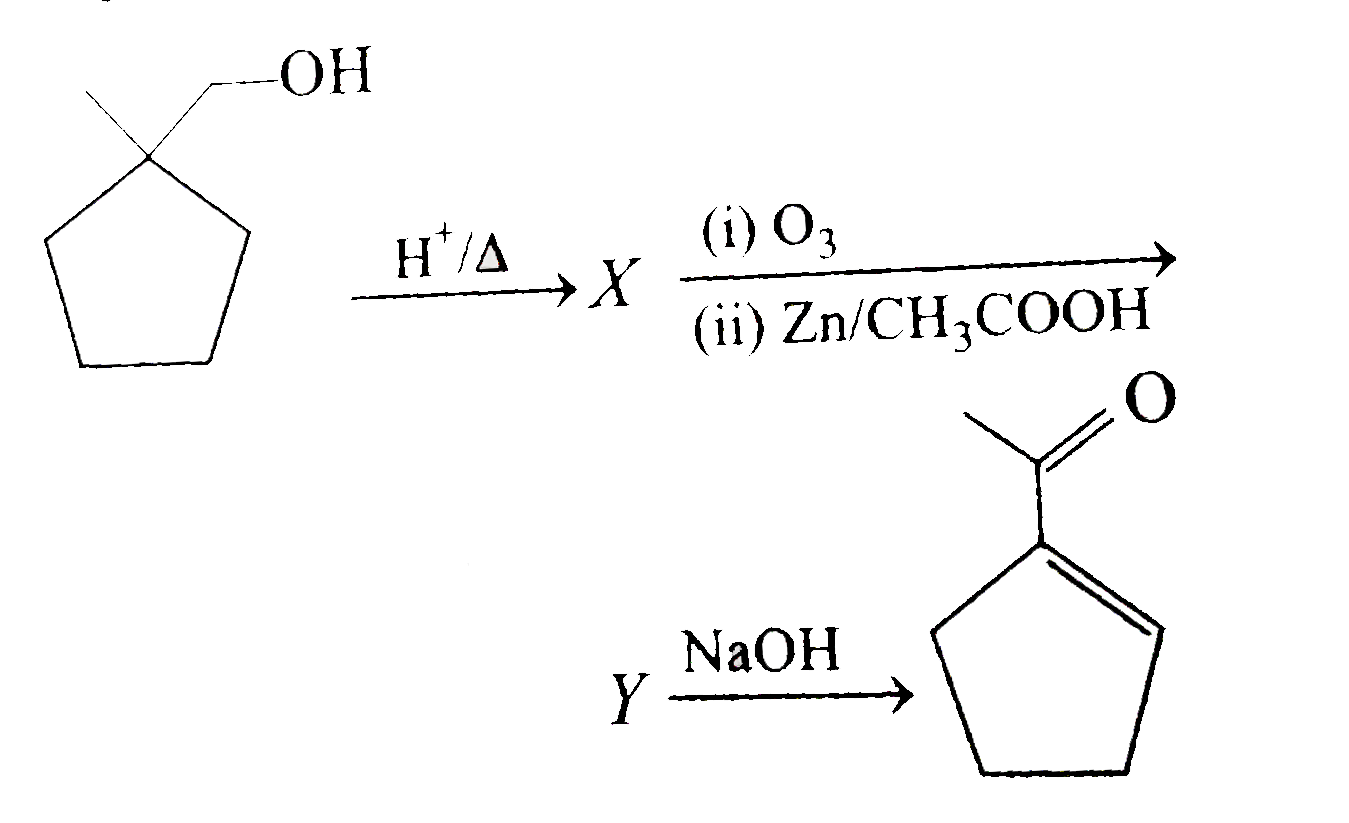Complete Solutions to JEE Main And Advanced of chapter ALCOHOLS AND ETHERS of Class 12 book with complete answers and questions
| Class 12 | CHEMISTRY |
| Chapter | ALCOHOLS AND ETHERS |
| IIT-JEE PREVIOUS YEAR | JEE Main And Advanced |
| Number Of Questions | 63 |
| Academic Year | 2023-24 |
The acidic hydrolysis of ether (X) shown below is fastest when

View SolutionAn unknown alcohol is treated with "Lucas reagent" to determine wheter the alcohol is primary. Secondary or teritary. Which alcohol reacts fastest and by what mechanism?
View SolutionThe major product of the following rection is

View Solution(I) 1,2-Dihydroxy benzene
(II) 1,3-Dihydroxy benzene
(III) 1,4-Dihydroxy benzene
(IV) Hydroxy benzene
The increasing order of boiling points of the above-mentioned alcohols is:
View SolutionThe best method to prepare cyclohexene from cyclohexanol is by using
View SolutionWhen phenyl magnesium bromide reacts with tert butanol, which of the following is formed?
View Solution
How many structures of F is possible?
View SolutionCompound A (molecular formula `C_(3)H_(8)O)`is treated with acidified potassium dichromate to form a product B (molecular formula `C_(3)H_(6)O)`. B forms shining silver mirror on warming with ammoniacal silver nitrate. B when treated with an aqueous solution of `H_(2)NCONHNH_(2)`, `HCl` and sodium acetate gives a product C. Identify the structure of C.
View Solution`1-`Propanol and `2-`propanal can be best distinguished by
View SolutionWhich one of the following will most readily be dehydrated in acidic condition?
View SolutionThe products of combustion of an aliphatic thiol (RSH) at 298 K are
View SolutionIn `CH_(3)CH_(2)OH`, the bond that undergoes heterolytic cleavage most readily is
View SolutionHydrogen bonding is maximum in
View SolutionHBr reacts fastest with
View SolutionAn industrial method of preparation of methanol is
View SolutionDiethyl ether on heating with conc. HI gives two moles of
View SolutionThe compound which reacts fastest with Lucas reagent at room temperature is
View SolutionEthyl alochol is heated with conc. `H_(2)SO_(4)`. The product formed is
View SolutionWhich of the following is soluble in water?
View SolutionThe correct statement(s) about the following reaction sequence is (are)
Cumene `(C_(9)H_(12))underset((ii)H_(3)O^(+))overset((i)O_(2))rarrPoverset(CHCl_(3)//NaOH)rarr`
Q(major)+R(minor), `Q underset(PhCH_(2)Br)overset(NaOH)rarrS`
View SolutionThe ether
 when treated with HI produces:
when treated with HI produces:
View SolutionThe products of reaction of alcoholic silver nitrate with ethyl bromide are
View SolutionStatement I Solubility of n-alcohol in water decreases with increase in molecular weight.
Statement II The relative proportion of the hydrocarbon part in alcohols increases with increasing molecular weight which permit enhanced hydrogen with water.
View SolutionA tertiary alcohol (H) upon acid-catalysed dehydration gives a product (I). Ozonolysis of (I) leads to compounds (J) and (K). Compound (J) upon reaction with KOH gives benzyl alcohol and a compound (L), whereas (K) on reaction with KOH gives only (M).

The structures of compounds (J), (K), and (L), respectively, are:
View SolutionA tertiary alcohol (H) upon acid-catalysed dehydration gives a product (I). Ozonolysis of (I) leads to compounds (J) and (K). Compound (J) upon reaction with KOH gives benzyl alcohol and a compound (L), whereas (K) on reaction with KOH gives only (M).

The structures of compounds (J), (K), and (L), respectively, are:
View SolutionA tertiary alcohol (H) upon acid-catalysed dehydration gives a product (I). Ozonolysis of (I) leads to compounds (J) and (K). Compound (J) upon reaction with KOH gives benzyl alcohol and a compound (L), whereas (K) on reaction with KOH gives only (M).

Compound (H) is formed by the reaction of:
View SolutionGlycerine contains one ......... Hydroxyl group.
View SolutionAliphatic ehters are purified by shaking with a solution of ferrous salt to remove ..... Which are formed on prolonged standing in contact with water.
View SolutionA...... Diol has two hydroxyl groups on ...... Carbon atoms.
View SolutionEthanol vapour is passed over heated copper and the product is treated with aqueous NaOH. The final product is .....
View SolutionSodium ethoxide is prepared by reacting ethanol with aqueous sodium hydroxide.
View SolutionThe yield of ketone when a secondary alcohol is oxidised is more than the yeild of aldehyde when a primary alcohol is oxidised.
View SolutionComplete the following reaction

View SolutionAn organic compound P having the molecular formula `C_(5)H_(10)O` when treated with dil `H_(2)SO_(4)` gives two compounds, Q and R both gives positive iodoform test. The reaction of `C_(5)H_(10)O` with dil, `H_(2)SO_(4)` gives reaction `10^(15)` times faster than ethylene. identify organic compound of Q and R. Give the reason for the extra stability of P.
View SolutionCyclobutyl bromide on treatment with magnesium in dry ether forms an organometallic compound `(A)`. The organometallic compound `(A)` reacts with ethanal to give an alcohol `(B)` after mild acidification. Prolonged treatment of alcohol `(B)` with an equivalent amount of `HBr` gives 1-bromo-1-methylcyclopentane ( C) Write the structures of `(A)` and `(B)`, and explain how `(C)` is obtained from `(B)`.
View SolutionExplain briefly the formation of products giving the structures of the intermediates.

View SolutionWrite the structures of the products. `(CH_(3))_(2)CH-OCH_(3)underset("heat")overset("HI(excess)")rarr`
View SolutionGive reasons for the following in one or two sentences. 'Acid-catalysed dehyration of t-butanol is faster than that of n-butanol'.
View Solution2,2-Dimethyloxirane can be cleaved by acid `(H^(o+))`. Write the mechanism.
View SolutionA compound `D(C_(8)H_(10)O)` upon treatement with alkaline solution of iodine gives a yellow precipitate. The fibtrate on acidification gives a white solid `E(C_(7)H_(6)O_(2))`. Write the structures of D,E and explain the formation of E.
View Solution3,3-dimethylbutan-2-ol losses a molecule of water in the presence of concentrated sulphuric acid to give tertramethylethylene as a major product. Suggest a suitable mechanism.
View SolutionWhen t-butanol and n-butanol are separately treatement with a few drops of dilute `KMnOD_(4)` in one case only, the purple colour disappears and a brown precipitate is formed. Which of the two alchols gives the above reaction and what is the brown precipitate?
View SolutionCompound `X` (molecular formula `C_5 H_8 O`) does not react appreciably with Lucas reagent at room temperature but gives a precipitate with amononiacal silver nitrate with excess of `MeMgBr, 0.42 gm` of `X` gives `224 ml` of `CH_4` at `S.T.P` Treatment of `X` with `H_2`. in the presence of `Pt` catalyst followed by boiling with excess of `HI`, gives n-pentane. Suggest the structure for `X` and write the equations involved.
View SolutionHow will you bring about the following conversion? "Ethanal to 2-hydroxy-3-butenoic acide"
View SolutionArrange the following in increasing order of boiling point: n-butane,n-butanol,n-butylchloride, iso-butane.
View SolutionWrite down the main product of the following reaction: `"Ethanol"overset("I_(2)//NaOH)rarr`
View SolutionGive a chemical test to distinguish between methanol and ethanol.
View SolutionSuggest a reason for the larger differenece between boiling points of butanol and butanal, although they have almost the same solubility in water.
View SolutionAn alcohol A, when heated with conc. `H_(2)SO_(4)` gives an alkene B. When B is bubbled through bromine water and the product obtained is dehydrohalogenated with exccess of sodamide, a new compound C is obtained. The compound C gives D when treated with warm dilute `H_(2)SO_(4)` in the presence of `HgSO_(4)`. D can also be obtained either byh oxidising A with `KMnO_(4)` or form acetic acid through its calcium salt. Identify A, B, C, and D.
View SolutionState the conditions under which the following preparations are carried out. Give necessary equations which need not be balanced.
(i) Ethanol from acetylene
(ii) Lead tetraethyl from sodium-lead alloy
(iii) Methyl chloride from aluminium carbide
View SolutionA compound 'X' containing C, H and O is unreactive towards sodium. It does not add with bromine. It also does not react with Schiff's reagent. On refluxing with an excess of HI, 'X' yields only one oragnic product 'Y'.'Y' on hydrolysis yield a new compound 'Z' which can be converted into 'Y' by reaction with red phosphorus and iodine. the compound 'Z' on oxidation with potassium permanganate gives a carboxylic acid. The equivalent weight of acid is 60. What are the compounds 'X','Y' and 'Z'? Write chemical equations leading to the conversion of 'X' to 'Y'.
View SolutionAn organic liquid 'A' containing C,H and O with boiling point `78^(@)C`, possessing a rather pleasant odous. On heating with concentrated sulphuric acid gives a gaseous product 'B' with the empirical formula `CH_(2)` 'B' decolourises bromine water as well as alkaline permanganate solution and takes up one mole of `H_(2)` (per mole of B) in presence of finely divided nickel at high temperature. Identify the substances A and B.
View SolutionThe number of hydroxyl group in pyrophosphoric acid is
View Solution`AC_(6)H_(14)O` chiral alcohol is converted to a bromide by treatment with `PBr_(3)`. Reaction of this bromide, first with Mg in ether , followed by quenching in 0.1NHCl produces an achiral `C_(6)H_(14) ` hydrocarbon. Which of the following is the original alcohol?
View SolutionWhat is the product from the acid catalyzed addition of methanol to 2.2-diethyloxirane?
View SolutionA chiral `C_(5)H_(10)O` ether reacts with hot HI to give a `C_(5)H_(10)I_(2)` product. Treatment of this with hot KOH in ethanol produces 1,3-pentadience. What is the structure of the original ether?
View SolutionThe reaction producing 2-ethyl-2-methyl oxirane is/are
View SolutionWhich of the following Grignard synthesis synthesis would fail to produce the esired alcohols?
View SolutionAssertion : Diphenyl ether (Ph-O-Ph) is very less reactive in acid catalyzed hydrolysis to phenol.
Reason : Oxygen is in resonance on bot side with phenyl ring.
View SolutionAssertion : 3-methyl-2-butanol is more reactive than-2- butanol in acid catalyzed dehydration to alkene.
Reason : 3-methyl-2-butanol is more stable carbocation than 2-butanol during dehydration reaction.
View SolutionConsider the four constitutatinal isomeres of a compound with formula `C_(5)H_(10)O` and their reactions with Grignard's reagent and `LiAIH_(4)` as described below:

Select the appropriate match of the compounds.
View SolutionIf 4-methyl-3-heptanol is boiled with concentrated sulphuric acid, it undergoes dehydration to form alkenes Theoretically, how many different alkenes would be formed?
View SolutionIn the following reaction, how many different diols would be formed?

View Solution
JEE Main And Advanced questions and complete solutions for chapter ALCOHOLS AND ETHERS of IIT-JEE PREVIOUS YEAR (CHEMISTRY) of Class 12